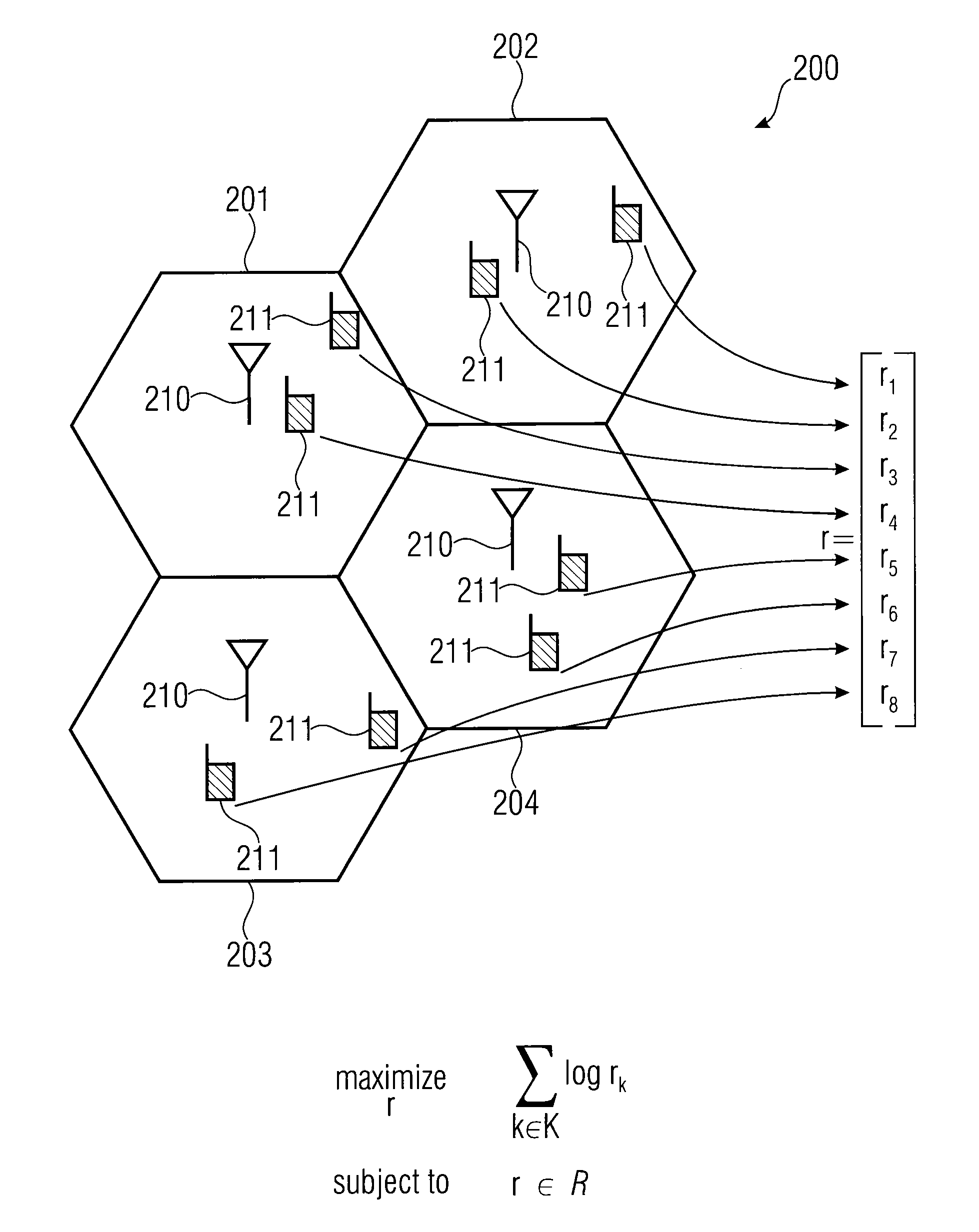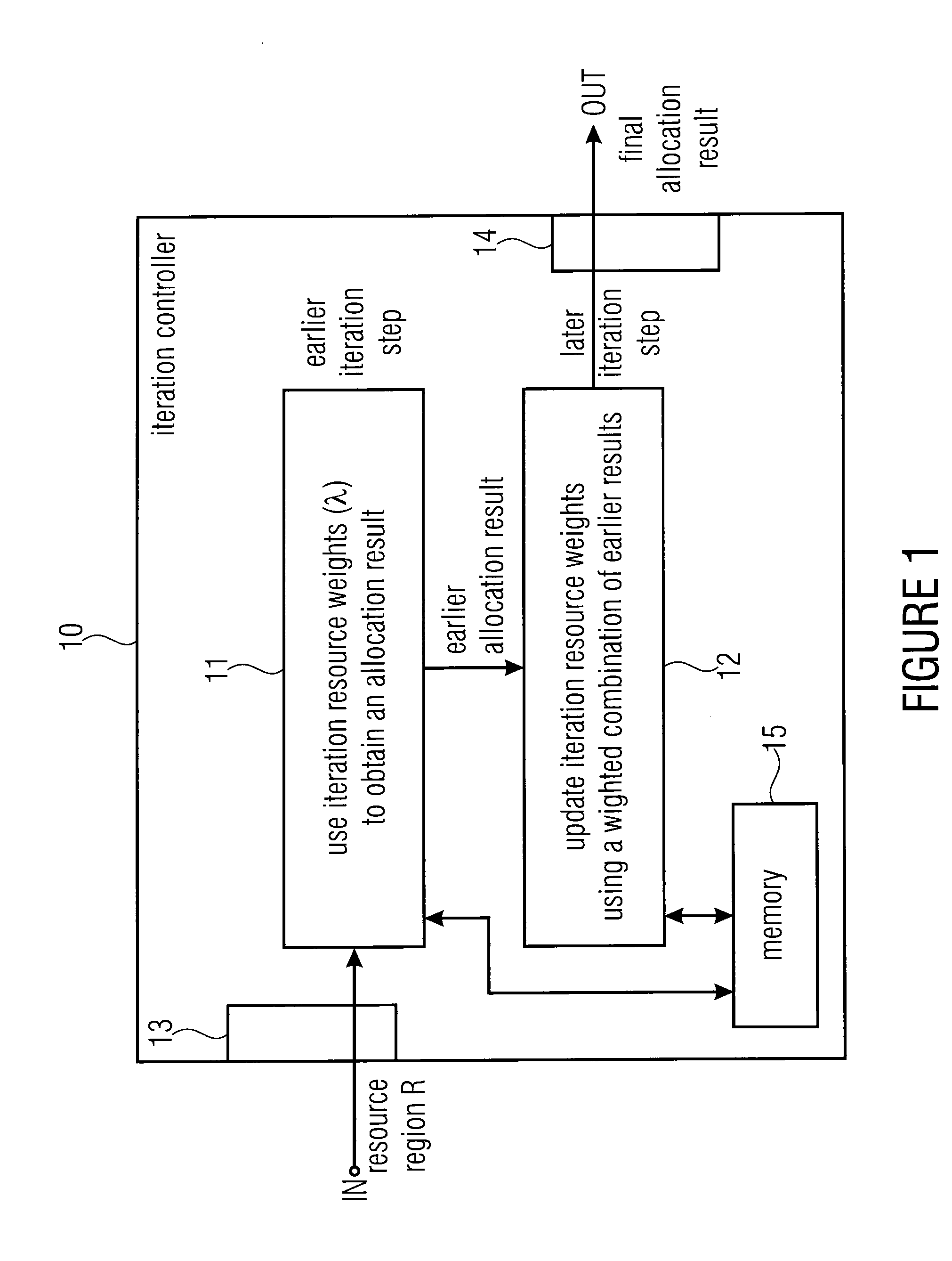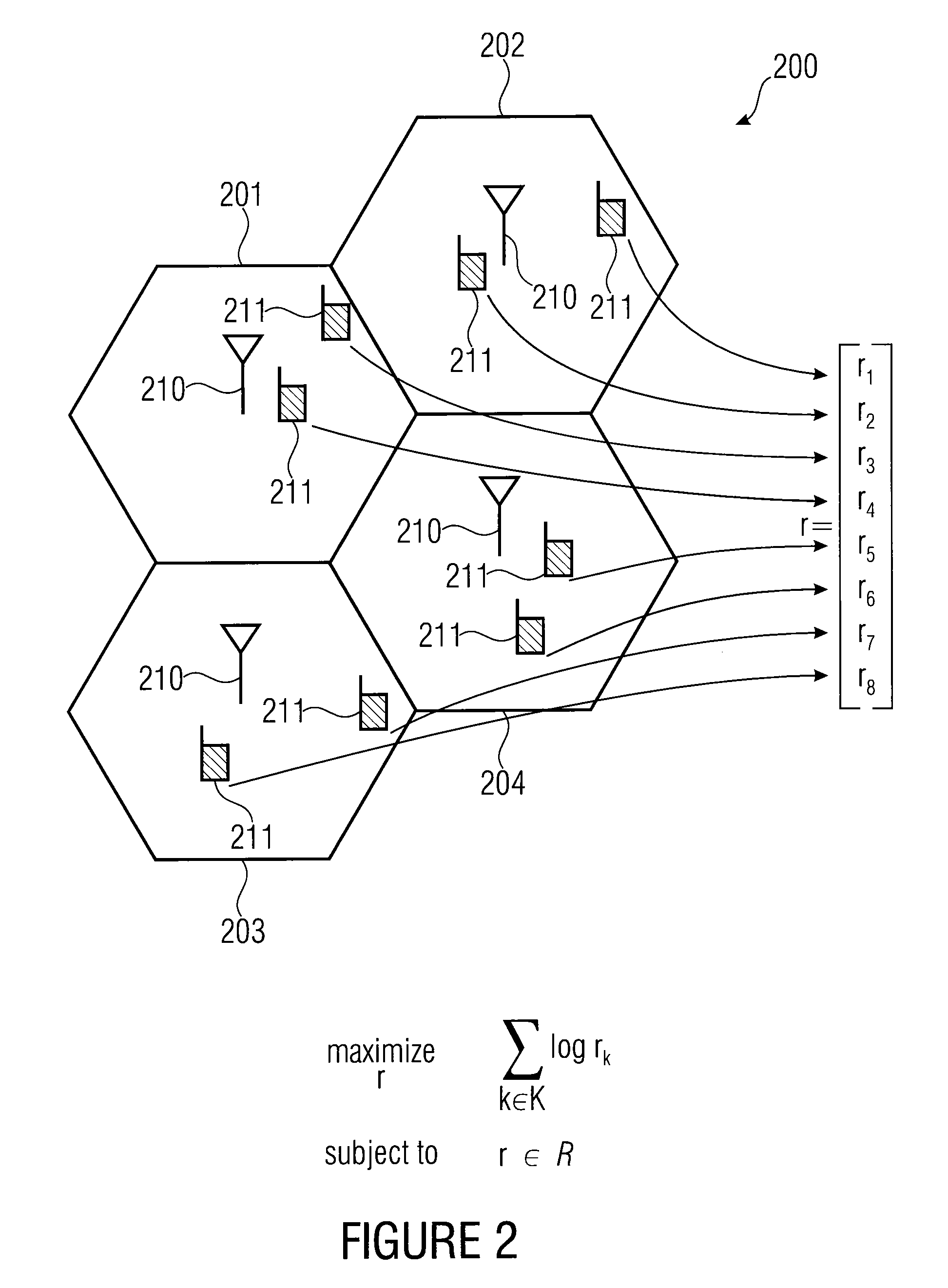Apparatus and method for allocating resources to nodes in a communication system using an update of iteration resource weights
- Summary
- Abstract
- Description
- Claims
- Application Information
AI Technical Summary
Benefits of technology
Problems solved by technology
Method used
Image
Examples
Embodiment Construction
[0038]FIG. 2 illustrates a problem to which the present invention can be applied. A problem scenario comprises several cells 201, 202, 203, 204, where each cell comprises a base station 210 and several mobile terminals 211. Now, the problem to be solved is that each mobile terminal 211 should receive a certain transmission resource such as a transmission rate, a number of frequency channels, a number and size of time slots, frequency slots, code slots or spatial channels. Specifically, the wireless situation is so that all mobile terminals 211 in a sense influence each other, and this mutual interdependence is typically described by the achievable rate region R which is, for example, assumed to be a convex set, although this is not necessitated for the invention. The rate region R is constituted by the physical layer techniques, for example MIMO transmission and channel realizations. As illustrated in [1], this problem can be solved by the dual decomposition and the dual problem is ...
PUM
 Login to View More
Login to View More Abstract
Description
Claims
Application Information
 Login to View More
Login to View More - R&D
- Intellectual Property
- Life Sciences
- Materials
- Tech Scout
- Unparalleled Data Quality
- Higher Quality Content
- 60% Fewer Hallucinations
Browse by: Latest US Patents, China's latest patents, Technical Efficacy Thesaurus, Application Domain, Technology Topic, Popular Technical Reports.
© 2025 PatSnap. All rights reserved.Legal|Privacy policy|Modern Slavery Act Transparency Statement|Sitemap|About US| Contact US: help@patsnap.com



